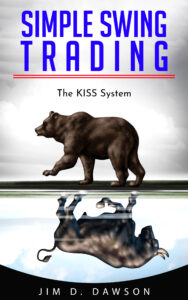Trading is one of the riskiest endeavors that has the potential to reward you immensely. It could also result in huge losses if you aren’t careful and strategized well. Over the years, stock market experts have tried to come up with strategies and systems to trade in a smarter way and minimize risk. One such strategy that has seen a revival in recent times is swing trading.
Unlike day trading, swing trading is less risky and can give you better returns over time. In this blog, we will discuss what swing trading is and how it works, as well as its benefits and drawbacks. We will also cover some swing trading strategies for you to understand the basics of swing trading before putting them into action.
What is swing trading?
A swing trading strategy is a trading strategy designed to profit from short-term price fluctuations.
Swing trading is often considered to be a low-risk, high-reward trading strategy. This means that swing trading can be an excellent way for traders to make money with minimal risk and effort.
The basic idea of swing trading is to watch market movements and quickly enter or exit trades as the market changes direction. This involves leveraging technical analysis to determine entry (buy) and exit (sell) points. There are several popular swing trading strategies, including reversal, retracement, breakout, and breakdown strategies. Each strategy has its advantages and disadvantages, but they all aim to profit from short-term price movements. To get started with swing trading, traders should first open a live or demo account and deposit funds. Then they can start following trade signals and analyzing markets to develop trade strategies tailored to their individual needs and goals.
How does swing trading work?
Swing trading is a trading strategy that involves buying and selling stocks to capitalize on price movements and momentum trends. Also known as day trading, swing trading is becoming increasingly popular among investors.
To be successful, swing traders must use technical analysis and charting to identify the best time to buy or sell an asset. There are several swing trading strategies, including trend following, mean reversion, and moving averages.
Some swing traders also watch out for gap risk, where a security’s price rises or falls significantly due to news or events that occur while the market is closed. The longer the market is closed, the greater the risk of swing trading.
Swing trading methods
– Swing trading methods include trend following, mean reversion, and moving averages.
– Trend following trading strategies try to identify the direction of a market and trade in that direction. They may use tools such as moving averages to help make their predictions.
– Mean reversion trading strategies look at historical price data and identify the best time to buy or sell an asset based on that data. They may also use indicators such as support and resistance levels to help make trading decisions.
– Finally, swing traders differ from long-term trading strategies as positions are held for a limited time before being sold.
– Whether you’re new to swing trading or have experience, try out different methods and find one that works for you and your investment goals.
The role of technical analysis
– Swing trading, also known as day trading, is a short or medium-term trading strategy designed to make profits from price fluctuations.
– Common trading methods include trend following, mean reversion and moving averages.
– Trend followers buy stocks with the expectation that their price will go up, and then hold onto them until the price goes down. They hope to profit when the stock price rebounds.
– Mean reverters are investors who buy stocks that have been falling in price, and then sell them when they stop falling. They assume that the stock market has reached a bottom and prices will start rising again.
– Moving average traders use technical indicators to predict upcoming price movements. These types of traders look for buying opportunities when moving averages cross upward or downward from a key support level.
– An automated trading system is a computer program that handles buying and selling decisions and keeps track of the market trends and movements automatically. This type of trading can be done using fundamental analysis or technical analysis to give buy-and-sell signals.
Swing trading strategies
Swing trading strategies are used by day traders and swing traders to capitalize on short-term price movements in the market. In swing trading, investors buy and sell assets when they are expected to rise or fall.
Common swing trading strategies include trend following, where an investor tracks the market trend and buys or sells assets with the aim of profiting from market movements, mean reversion, which involves buying and selling assets in reversal of their recent performance and trading moving averages, where an investor uses a moving average to guide their asset trading decisions. Technical analysis is another popular swing trading strategy that involves using charts and indicators to analyze price movements and predict future trends.
While swing trading is an exciting way to trade stocks and other assets, it requires a lot of patience and discipline to avoid heavy losses.
1. Fibonacci retracement
Swing trading is a trading style that takes advantage of sudden price movements in an attempt to profit from short-term market trends. To do this, swing traders typically place stop-loss orders at specific levels below the entry price and a target price above the entry price. These strategies generally include reversal, retracement, breakout, and breakdown trades. The Fibonacci retracement is one of these trading strategies and is used to identify optimal entry and exit points when swing trading. This trading strategy uses a calculated retracement of a previous swing trade to determine the best entry and exit points for subsequent trades. The retracement helps swing traders identify the areas where the market has recently reversed or turned around and makes it easier to predict where prices may be headed next.
Swing trading commonly involves taking positions in favor of or against a particular market trend and then closing out those positions when the trend changes. Traders use various swing trading strategies to optimize their investment strategies and maximize profit potential. One such swing trading strategy is the Fibonacci retracement, which identifies optimal entry and exit points for swing trade transactions.
2. T-line trading
T-line trading is a strategy for entering or exiting a trade based on closing prices. It is best used when swing trading, as it allows traders to take advantage of market ebbs and flows. T-line trading works by setting up trading strategies based on the closing price of an asset over time. For instance, traders might buy or sell depending on whether the price has risen or fallen from its opening value over a certain period of time. Other popular swing trading strategies include trend following and mean reversion. These strategies aim to capture profits of 2%, 3%, 5%, or 10% respectively.
Swing trading can be an effective way of making money in short-term market movements. However, it requires a lot of skill and research to succeed. To be successful, swing traders must have $5k-$10k in capital and a strong understanding of technical analysis to determine if a trade is worth making and when to take action.
3. Japanese candlesticks
Japanese candlesticks are commonly used by traders to identify trading opportunities. These candlesticks highlight the direction of a currency’s price with the use of a series of indicators, such as support and resistance levels. As swing trading strategies, they include the use of moving averages to determine support and resistance levels of a price range. In addition to this, swing trading differs from long-term trading strategies, which are often employed by institutional investors.
Swing trading strategies such as Japanese candlesticks can be particularly useful to day traders and other market participants looking for short-term investment opportunities. By using these candlesticks to identify support and resistance levels in a price range, swing traders can profit from changes in price over a short period of time.
Swing trading vs. day trading
– Swing trading and day trading are similar in some respects but differ mainly in the holding position time frame.
– Day traders close their positions within minutes or before the market closes and don’t hold positions overnight, whereas swing traders may hold positions for days or weeks.
– Day traders may benefit from enhanced leverage and avoid subjecting their positions to overnight risks, while swing traders may be subjected to the unpredictability of overnight risks that may result in significant price changes.
– Day traders may experience amplified liquidity risks, while swing traders have the luxury of holding a position until the bid-offer spread contracts.
– Both day trading and swing trading can help you profit from market volatility and financial opportunities arising from short term price fluctuations, but there are many factors to consider before choosing one approach over the other.
You should consider your investment time frame and risk appetite before taking a call on whether swing trading or day trading is better for you.
Conclusion
You can now trade with confidence and swing trade assets of your choice. The first two steps are setting up a secure trading environment and choosing the asset that you want to trade. We can’t stress enough the importance of patience and research when swing trading. Remember that you must also learn how to cut losses and manage your gains for optimal results. Always trade with an asset that you are familiar with, and keep an eye on market news for updates. Happy swing trading!


